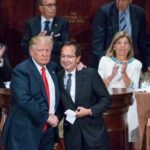
Treasury prices fell Monday, pushing up yields, as investors steered away from safe-haven assets, with investor appetite for risk buoyed by the start of the of a COVID-19 vaccine and continued efforts toward another round of aid spending by lawmakers.
What are yields doing?
The yield on the benchmark 10-year Treasury note TMUBMUSD10Y, 0.926% rose 4.4 basis points to 0.931%, while the 2-year note yield TMUBMUSD02Y, 0.125% rose 0.8 basis point to 0.121%. The 30-year Treasury bond yield TMUBMUSD30Y, 1.666% was up 5.1 basis points at 1.678%. Yields and debt prices move in opposite directions.
What’s driving the market?
Pfizer Inc. PFE, -1.46% over the weekend began shipments of the vaccine it created with Germany’s BioNTech SE BNTX, -1.73% around the country, after the Food and Drug Administration late Friday granted emergency authorization for its use in the U.S.
The rollout comes as the number of COVID-19 cases continued to surge, which was also upping pressure on lawmakers to reach a deal on another round of aid spending.
A bipartisan group of Senate and House lawmakers, which has pushed for a compromise $908 billion plan, were reportedly weighing the possibility of putting $160 billion of state and local aid and liability protections into a separate package, leaving a $748 billion aid plan that would provide $300 a week in additional state unemployment benefits for four months, $300 billion in aid to small businesses and $35 billion for health-care providers, the Wall Street Journal reported.
Meanwhile, the Federal Reserve is set to meet Tuesday and Wednesday in its final policy meeting of 2020.
What are analysts saying?
“The overnight price action appears to be favoring [a Fed] meeting that reveals no change to the composition of bond purchases as last week’s bull flattening has been partially reversed,” said Ian Lyngen, head of U.S. rates strategist at BMO Capital Markets, in a note.
A 10-year Treasury yield at 92 basis points “leaves the Treasury market decidedly midrange and the next two sessions will be meaningful insofar as establishing the departure point for rates ahead of the Fed and indirectly skewing the probability for a bearish break by year-end. 1%,” he said.








